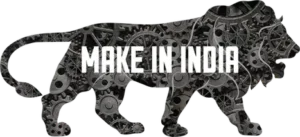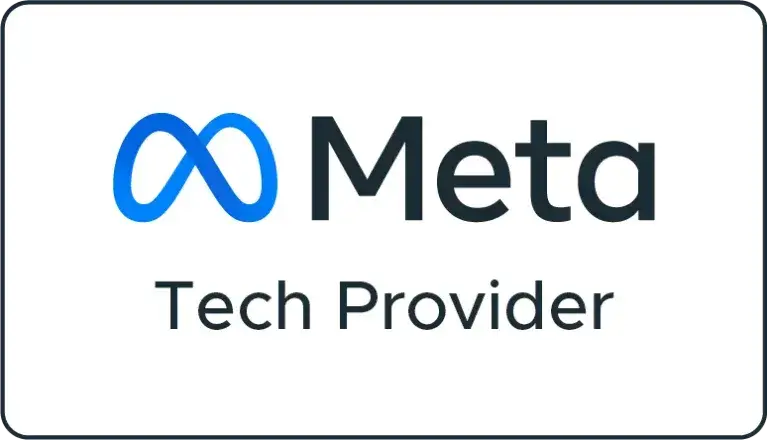Introduction
The world of today is habitually fast, particularly when it comes to digital industry. Therefore, the majority of digital marketing professionals are striving to find ways to make their processes more efficient and give better results. An excellent solution that has transformed the industry is digital marketing automation. Whether it is an email campaign or a social media, marketers use automation tools to make their impacts increase.
Understanding Digital Marketing Automation
Definition of Digital Marketing Automation:
Automation of marketing tasks through tools and technologies such as email marketing, social media posting, and lead generation. Automation of repetitive tasks, more efficient processes, and marketing campaigns in several channels with little human assistance. For customer outreach too, tools help marketers in delivering their target audience personalized, timely, and relevant information with an optimum level of user engagement leading to conversions.
Essential Components and Functionalities of Automation Tools:
Automators are equipped to simplify and streamline processes and boost aspects of digital marketing. Digital marketing automation solutions and platforms have a variety of features and automation capabilities that include:
Email marketing automation: Automating the creation, timing, segmentation, and evaluation as well as delivery of email marketing campaigns based on consumer habits.
Social media management: Automating the release of content, interaction with commenters, assessment of systems, and more.
Lead generation and Nurturing: Scoring, certification, identification, and recruit automation is used to locate leads.
Website Personalization is an eloquent attribute exhibited by automation tools. Website personalization enables you to branch your website content and experiences based on your users’ preferences, behavior, and demographics. You virtually create an intimate relationship with your audience because your content resonates with the users as they feel seen and heard.
Benefits of Digital Marketing Automation
Increased Efficiency and Productivity:
Primarily, much can be achieved if digital marketing automation is used to simplify and automate routine actions and processes. This can allow for a significant saving of time and resources that marketers can re-invest into worthwhile activities. For instance, time efficiency and productivity can be reached if email scheduling, social media posts, and lead nurturing processes are automated.
Enhanced Targeting and Personalization:
They allow for highly targeted and personalized content. With demographic sharing, interest or behavior, marketers can deliver specialized content to their particular segment at the right time. Segmentation a marketing audience is essential because targeted e-mails receive a remarkable average of 14.32% more than non-targeted campaigns .
Improved Lead Generation and Nurturing:
Automation platforms have robust lead generation and nurturing capabilities that enable marketers to identify, capture, and nurture leads across the buyer’s journey. Marketers can automate and facilitate the creation, scoring, qualification, and optical character recognition processes. This way, they can more systematically and quickly identify high-quality leads and bring them under more targeted messaging and content conversion.
Streamlined Workflow and Campaign Management:
By using digital marketing automation, marketers can create, manage, and track campaigns from one central platform, resulting in a more efficient workflow and better team collaboration. Automation tools also provide insights into how campaigns are performing, allowing marketers to look into the metrics, monitor ROI, and optimize their campaigns in real time on a data-driven basis.
Common Use Cases for Digital Marketing Automation
Email Marketing Automation – Email marketing automation tools help marketers create and send targeted email campaigns, plan email sends based on triggers or a set schedule, sort email lists, and keep track of performance such as open and click-through rates and conversion metrics.
Social Media Management and Posting – Social media scheduling enables marketers to plan out their posting schedules, real-time monitor and respond to comments and messages, evaluate performance, and curate and distribute content on a range of social media platforms.
Lead Scoring and Segmentation – Scoring and sorting leads through automation aide in determining which leads are most valuable and which must be prioritized or addressed directly, improving strategies for managing leads. This may be done based on a range of criteria such as demographic information, engagement, behavior and purchase intent, among others.
Website Personalization and Dynamic Messaging – Dynamic website customization is enabled through automation which allows website content and messaging and calls to action to change depending on the user’s behavior, desires, and demographics, increasing engagement on the website and improving conversion implementation and retention.
Choosing the Right Automation Tools
Factors to Consider in Selecting Automation Software
While selecting a digital marketing automation platform, marketers should consider the following factors:
Features and functionalities: Different platforms offer various unique features; ensure that the platform’s capabilities and tools match the goals of your marketing campaign.
Ease of use: how easy is it for other professionals and staff to navigate the automation software? Some learning curves can be very steep. Given a choice, choose the easier option.
Integrations: the platforms must easily integrate systems such as CRM systems, analytics tools, email marketing platforms, and more.
Scalability and flexibility: does the platform have a provision for growth – can it accommodate your business’s growth curve or expansion dynamics?
Training and support: this is crucial as it can easily make or break automation strategies. Ensure that the providers offer adequate support and training options, both online and offline.
Popular Automation Platforms And Their Features
The automation industry is continually evolving, and many platforms exist with unique, specialized features. A few common platforms are:
HubSpot – HubSpot’s marketing automation includes powerful email capabilities, lead queues, analytics tools, and social media features.
Marketo – Marketo is an excellent automation platform focusing on lead management, lead generation, email marketing, and campaign management and monitoring. The reporting and analytic tools are also powerful and robust.
Pardot – Pardot, being a Salesforce product, provides B2B marketers with a prominent platform integrating lead generation and lead nurturing tools, ROI reporting, and marketing analytics with Salesforce CRM.
Implementing Digital Marketing Automation
Steps to Set Up and Configure Automation Workflows:
The following steps provide the key to implementing digital marketing automation:
Define your goals and objectives. For example, with the intention of automating, define the desired outcomes that the process would help achieve, such as lead generation or sales. The process of automation leads back to attaining organizational aims.
Map out your customer journey. Analyze your journey from awareness to conversion and identify the critical touchpoints and interactions to automate processes and improve the user experience to drive the desired actions.
Select automation tools: Choose suitable platform or software level for your automation tools and customize the tools to align with the requirements and goals of the campaign.
Create automation workflows: This comprises of triggers, actions as well as conditions you will need to automate email sending, lead scoring and posting on the social media.
Test and optimize: Finally, test your workflows to ensure they work as expected and watch performance metrics to identify what can be improved.
Best Practices for Organizing and Managing Automation Campaigns:
To optimize the efficiency of your automated campaigns, it is important to follow certain guidelines.
The best practices above include:
Segmented audience. You can segment your audience on the basis of demographics, as well as specific user behavior and purchase history can allow you to enable more targeted and personalized messaging.
Dynamic content. This allows you to use dynamic content feed and personalization features to help make your content and offers as relevant as possible for each individual recipient based on their preferences and behavior.
Campaign performance tracking. Monitor your key metrics like open rates, click-through rates and conversion results to track your campaigns’ success. This helps you identify areas that need improvement.
Iteration and optimization. Use performance data and insights to make ongoing iterations and optimizations to your automation workflows. You should adjust settings to help you drive higher engagement, conversion rates, and ROI over time.
Training and Onboarding Team Members on Automation Tools:
Make sure that your team members are well trained and have been completely briefed and on-boarded when it come to your tools and automation platforms. Resource them with enough training modules, documentation and support that will enable them to know how best to use the tools effectively to achieve their purpose using the automation capabilities.
Measuring Success and Optimization

Some Key Metrics to Track for Checking Automation Performance: When you measure the performance of your automation campaigns, you may want to measure such a few key metrics :
Conversion rate: the percentage of recipients that successfully complete the predetermined action, complying a form, or even making a purchase, among others.
Click-through rate: The percentage of users actually taking an action and clicking the link.
Engagement rate: This will comprise opens, clicks, likes, shares, and comments etc.
Rate of return (RoI): The ratio of the revenue or worth produced to the price maintaining your automation program, expressed as a proportion.
Analyzing Data and Insights to Optimize Automation Workflows:
Leverage the information and research acquired from your automation initiatives to recognize trends, patterns, and processes that can be improved. Study how effectively the automation campaign runs, perform A/B testing and collect input from the crowd to improve your automation workflows with each update.
Iterative Improvements and Continuous Optimization Strategies:
Iterate and refine your automation workflows continuously after performance data analysis and testing. Through experimenting with various messaging options, creative variations and automation sequences, identify which resonates well with your audience and achieves the best results. Realize the full potential of your automation campaigns through a culture of experimentation for enhanced outcomes.
Overcoming Challenges and Pitfalls
Common Challenges in Implementing and Using Automation:
Even with the many benefits of using digital marketing automation, this strategy also involves multiple challenges and missteps, which include: over-automation and lack of personality, low data quality or absence of the data itself, integration difficulties.
Over-automation occurs when your marketing automation practices are entirely devoid of the human factor, which can result in dry or filled with spam messages that deteriorate the relationship between your brand and your audience.
Lack of personality, in turn, is the absence of personalizing your aimed automation efforts; this can lead to generic or irrelevant messages without users’ interests in mind.
Low-quality data is one of the critical detrimental points in the automation strategy since targeted messages without real friendly targeting can be harmful to audience relationships.
Integration difficulties arise from the hopeless task of combining past systems and software with the new sophisticated automation tools.
Strategies for Overcoming Obstacles and Maximizing Benefits:
To fully benefit from digital marketing automation and counter its drawbacks, consider the following strategies: maintain a solid balance between automation and personalization by automating widely with personalized messaging and ensuring human support, investing in data quality and integration by implementing data quality management that enhances data quality, data integration within automation and between systems, and value-added interactions, focus solely on only value-addition that contributes to the growth of a user experience and consumer satisfaction.
Conduct as much automation as possible, but only where it adds value to your audience and ensure that human support powers the systems for any engagement beyond.
Avoiding Pitfalls such as Over-automation and Lack of Personalization:
Choose the tasks and processes that are well-suited for automation and keep a human touch in your messaging and interactions to avoid over-automation. Create automation workflows designed to provide personalized and relevant content based on user preferences, behavior, and demographics and avoid the dangers of generic and impersonal messaging.
Future Trends in Digital Marketing Automation

Emerging Technologies and Innovations in Automation:
The future of digital marketing automation is defined by the latest technologies and trends that transform the way marketers work. Below are some of the most significant trends and advancements to consider:
Artificial intelligence and machine learning. AI-backed automation solutions are becoming more developed, which allows marketers to analyze data, predict user behaviors, and automate decisions on a large scale.
Predictive analytics. Predictive analytics algorithms use available data to predict future trends, uncover opportunities and further improve marketing campaigns in real-time, allowing marketers to always stay ahead of the curve and anticipate their customers’ needs and requirements.
Chatbots and conversational marketing. Interactions between marketers and their audiences are being transformed with the help of chatbots and conversational AI, which help provide assistance and help to users in real-time, personalizing their interaction using chat interfaces and messaging apps.
Predictions for the Future of Automation in Digital Marketing:
In the future, digital marketing automation will be characterized by the following trends:
One potential future of digital marketing automation is increasing levels of personalization and customization. Automation tools will improve by utilizing advanced AI and machine learning algorithms to create more personalized and customized experiences for consumers by tailoring content and messaging to individual preferences, behavior on different channels, and situational context.
Another is integration and interoperability. Automation platforms will become more connected and integrated in ways that allow data to flow seamlessly between automated digital platforms and other systems, channels, and other such elements of a unified marketing ecosystem.
The final future trend is user experience. Automation will allow marketers to create more interactive experiences for consumers across digital channels. Marketers can engage and intrigue consumers by using technologies like AR, VR, and interactive content.
Opportunities for Staying Ahead of the Curve
Marketers that do not want to stay behind and want to maximize the opportunities that digital automation offers to them have to:
Stay up-to-date on current trends and developments in digital marketing automation: Invest in new trends and innovations, which may redefine the market requirements and give your business a competitive advantage.
Allocate more funds to data-driven automation optimization: Start utilizing data analysis software to gain in-depth knowledge about your target audience, its needs, preferences, and the trends in the markets. Use this information to optimize the marketing automation you already have in place and develop marketing campaigns that are more personalized and attractive.
Promote the culture of innovation and experimentation: Encourage the team to look for new talents, exchange ideas, test new technologies, settle on experiments, and take feedback.
Conclusion
To sum up, digital marketing automation is a great opportunity for marketers to optimize processes, become more efficient, and get results on a bigger scale. Using various automation tools and technologies, almost any marketer can provide their audience with individual and timely content and achieve better engagement, conversions, and revenue. However, it is essential to solve the existing problems, including over-automation, a deficiency of personalization, and the quality of the information used, to get better efficiency from automation, as well as to implement the best practices.
In conclusion, the future of digital marketing automation has continued to evolve with some of the emerging technologies and innovations including artificial intelligence, predictive analytics, and conversational marketing among others that have the potential of reinventing how marketers work and interact with the customers. To stay relevant and take advantage of these trends, marketers must get in the driver’s seat of these innovations to capture new prospects, gain a competitive advantage, and win big in digital.
Harnessing the power of digital marketing automation requires a strategic approach, ongoing experimentation, and a commitment to continuous improvement and innovation. By following the principles and strategies outlined in this guide, marketers can unlock the full potential of automation and drive meaningful results for their businesses.













